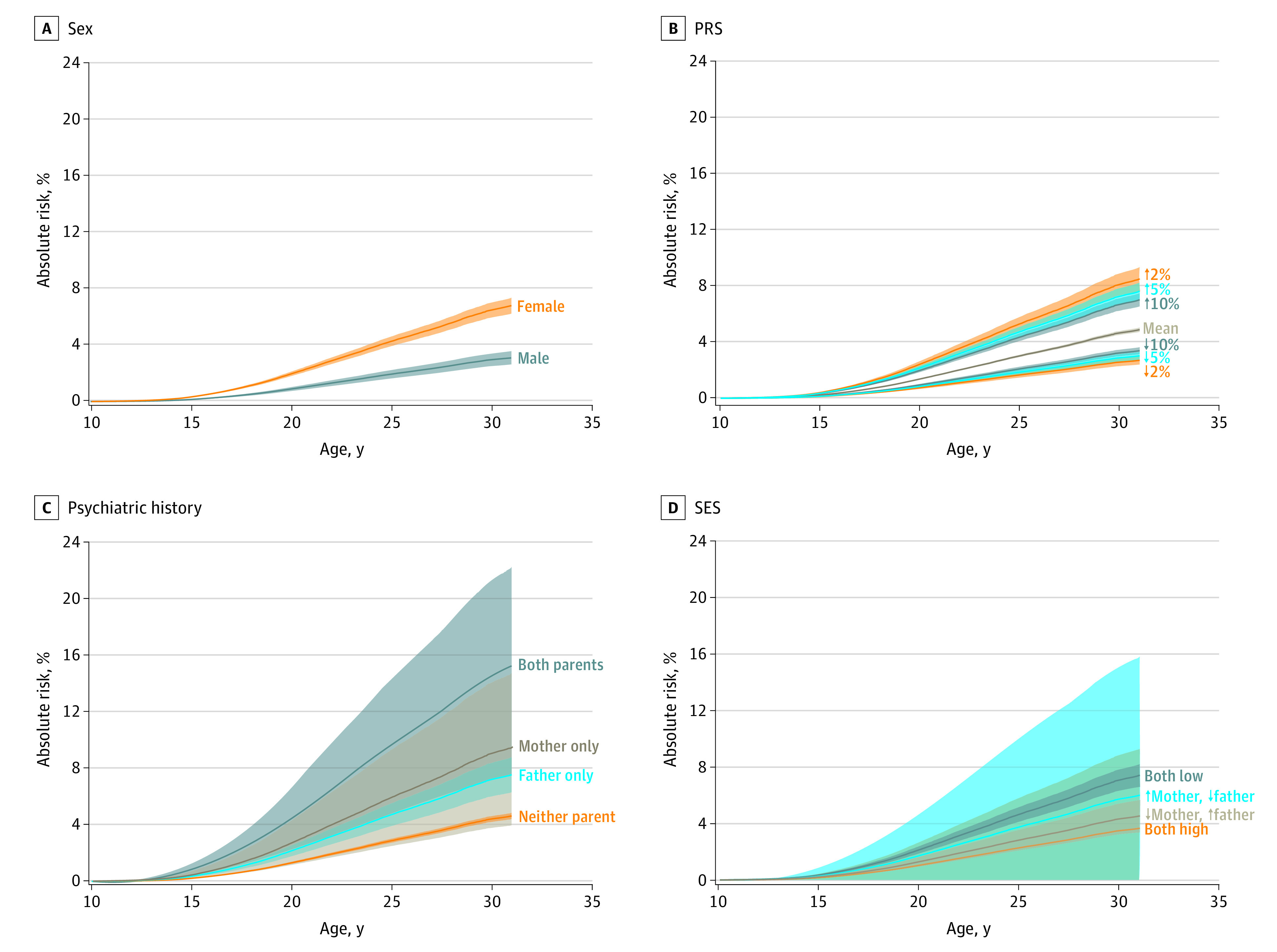Figure 2. Absolute Risk of Major Depression as a Function of Age in Association With Sex, Polygenic Risk Score (PRS), Maternal and Paternal Psychiatric History, and Socioeconomic Status (SES).

A, Crude absolute risk of major depression related to sex. For example, the absolute risk for women 30 years of age is 6.5% (95% CI, 5.9%-7.0%). The analogous risk for men is 3.0% (95% CI, 2.5%-3.4%). B, The upper curve is the risk for individuals with the highest 2% population-based polygenic liability for depression, whereas the lower curve is the absolute risk for individuals with the lowest 2% liability. For instance, at 30 years of age, the risks are 8.1% (95% CI, 7.3%-8.9%) for individuals with the highest 2% population-based polygenic liability for depression and 2.7% (95% CI, 2.4%-2.9%) for individuals with the lowest 2% liability. C, Risk of depression as a function of age according to parental psychiatric history. The upper curve shows the risk for individuals when both parents have a psychiatric disorder. The lower curve is the risk associated with no history of psychiatric disorder in parents. For these 2 groups of individuals, the risks at 30 years of age are 14.6% (95% CI, 7.3%-21.3%) when both parents have a psychiatric disorder and 4.4% (95% CI, 4.2%-4.6%) when neither parent has a history of psychiatric disorder. The 2 curves in between correspond to the cases in which only the mother or only the father have been diagnosed with a psychiatric disorder. D, Upper risk curve applies to individuals whose mother has completed only primary school and whose father is unemployed (risk at 30 years of age: 7.1% [95% CI, 6.3%-7.8%]). Lower risk curve applies to individuals whose mother has a postgraduate degree and whose father is a white-collar worker (risk at 30 years of age: 3.5% [95% CI, 0.0%-8.8%]). The 2 risk curves in between correspond to the scenarios in which mothers have completed only primary school and fathers are managers and where fathers are unemployed and mothers have postgraduate degrees. Upward arrow indicates increased risk; downward arrow, decreased risk.
